#benefits of lemon balm
Text
#drinks#easyrecipes#GAMEDAY#gingers#healthylifestyle#HealthyLiving#herbtea#homegrown#icedtea#LEMONADE#mint#organic#recipeblog#refreshing#summer#tea#tee#vegan#benefits of lemon balm#fresh lemon balm tea recipe#health benefits of lemon balm#health benefits of lemon balm tea#herb tea recipe#herbal tea recipe#lemon#lemon balm#lemon balm benefits#lemon balm health benefits#lemon balm herb#lemon balm plant
0 notes
Text
Healthy herbal teas to drink everyday
Healthy herbal teas to drink everyday
When it rains, there’s this inexplicable craving for hot tea and some crunchy snacks – it’s hard to find the logic behind it, but that’s how Indians are! Tea, for us, is much more than just a beverage – it’s an emotion that offers comfort or energy as required and is a great way to revive old relationships or an excellent platform to create new ones. But what if you could switch to Healthy herbal…

View On WordPress
#chamomile tea#Chamomile tea benefits#Fennel Tea#Fennel Tea benefits#Ginger tea#Ginger Tea benefits#healthy herbal tea#healthy herbal tea recipes#healthy herbal teas#Healthy herbal teas to drink daily#Healthy herbal teas you should drink#Healthy herbal teas you should drink every day#Herbal teas to drink everyday#Hibiscus tea#Hibiscus tea benefits#How to brew herbal teas#Lavender Tea#Lavender Tea benefits#Lemon Balm Tea#Lemon Balm Tea Benefits#Moringa Tea#Moringa Tea benefits#peppermint tea#Peppermint Tea benefits#recipes for herbal teas#Rose Hip Tea#Rose Hip Tea benefits#What are herbal teas#Which herbal tea is the best#Which is the best herbal tea
2 notes
·
View notes
Text
0 notes
Text
What to Drink after Abortion for Fast Recovery
Undergoing an abortion can be a physically and emotionally challenging experience for women. After the procedure, it is crucial to prioritize your well-being and recovery. Proper nutrition and hydration are vital in promoting healing and restoring energy levels. In this article, we will explore What to Drink after Abortion that can aid in your fast recovery, providing the necessary nutrients and…

View On WordPress
#Benefits of Drinking Water#Chamomile Tea#Drink#Drink after Abortion#Drinking Water#Drinking Water after Abortion for Fast Recovery#Ginger Tea#Hibiscus Tea#How to use water after abortion for fast recovery#Is Herbal Tea good for you?#Is milk good for you?#Lemon Balm Tea#Nettle Tea#Peppermint Tea#Red Raspberry Leaf Tea#What to Drink after Abortion#What to Drink after Abortion for Fast Recovery
1 note
·
View note
Text
The Permaculture Spiral Garden - A Great Starting Point
There is probably no other structure as popular for illustrating Permaculture in practice as the Herb Spiral. Okay, I guess I could mention the lasagna sheetmulching method or also the cob oven that tends to be the first hands-on project at a typical Permie intro session. But when it comes to showing how landscape design, zones and sectors, stacking functions, and efficient use of space and water come together in one unique structure, the Spiral Garden is unbeatable.

Turning Theory into Practice
In typical Permaculture Designer Certificate courses, but even in brief intro weekends to Permaculture, there tends to be a lot of theoretical discussions. Since the numerous design principles can be applied to any climatic region, from the tropical to the subarctic, and on any scale from the humongous to the tiny, the practical aspects of the ideas can easily get lost. That's where a good hands-on application comes, where the participants get to move around rocks and dirt, while realizing how much it ties in to the concepts they've just discussed. This way the apparent "main purpose" of "building something to grow all your kitchen herbs on", becomes a neat side feature.

Adjust Your Landscape!
The first thing to realize that landscape is welcome to be modified and adjusted to bring out the best in it. Clearly, while it is important to work with what's there already, it doesn't hurt think about mounds and valleys. And before you bring out the excavators for your large-scale farm, it makes sense to start small… say on a circle of 2-5 meters (6-16 feet) diameter. In other words, the Spiral Garden is a hill with a spiral shaped surface, leading down to ground level, or further down into a water hole. It can be made out of rocks, bricks, concrete debris, or anything else you have lying around that can hold your soil.

Design According to Your Scale
Looking around for existing Herb Spirals it's easy to get confused. Some are so big you can actually climb on them (that is, you have to in order to reach what's growing on top). Others are so tiny that you may not even want to step on them. The question is: which size is the right one for you? Since this is something you will have to decide almost daily in Permaculture, it doesn't hurt starting out with this important question.
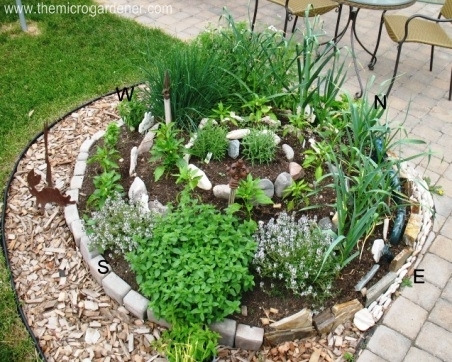
Organizing Your Spiral Garden
While there are seemingly endless types of Spiral Gardens, there are a few things they all have in common: They all start out with a region on the top, where water is bound to run off right away, leaving the soil relatively dry. This area is also the most exposed to the wind. Keep this in mind when choosing the plants that are going to live here. Ideally, the spiral should start sloping toward the East from here. Delicate plants that benefit greatly from the morning sun will appreciate this region. As the slope continues toward the South and West, it becomes more suitable for sun loving species. Finally, as the spiral reaches the ground level in the shady Northern part, it will be perfect for herbs that prefer less sun, more shade and more water, since the soil tends to be wetter here. (Note: This is for the Northern Hemisphere. In the Southern Hemisphere North and South are reversed.) To make full use of the runoff water, many people add a small pond at the base of the spiral, where additional aquatic plants, such as watercress, can be grown.

The given illustration offers a good number of herbs for a nicely diverse kitchen. Depending on what else you want in your Herb Spiral, you can add it in the most suitable region. Mint and lemon balm love the cooler, shady part with more water. Lemongrass is great in the sunny area, and tarragon and estragon prefer the dry top of the spiral. Of course, the idea is not limited to kitchen herbs. For maximalists, the same theory can work with a mountain you might want to terraform into a spiral farm. But right now I'd prefer to stay small scale.
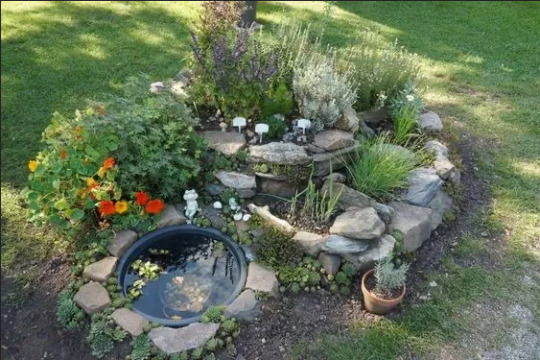
Plenty of Benefits (That's Why It's Permaculture)
As explained above, the main purpose of the Spiral Garden is not only to increase your gardening area by making use of the vertical, but also to create diverse climatic conditions, which do make a difference on the smallest scale. But as Permaculture tends to be, there are many other benefits to it. The structure itself offers great habitat for numerous animals, such as frogs, salamanders, lizards, but also pollinating insects, and of course others that may not directly benefit us, but by feeding on others they all add to the stability of our ecosystem. The structure itself will suppress weeds and make use of material that you're not likely to use elsewhere. Finally, depending on the size and location, it will be an ideal place to grow all your kitchen herbs right where you can access them most easily.

Some Things to Keep in Mind
When building the structure, make sure it will contain the soil in a nice trough, slanting slightly inward. That way bits and pieces that fall off will roll towards the center, until contained by the main mound.
Make sure the slope is always nice and gradual, avoiding sudden drops where the water can rush down quickly, eroding the soil.
If you're going to walk on your spiral, include a separate walkway that won't compress good soil. Most importantly, it should be sturdy enough to provide stability and make access safe.
Don't forget that while the structure is important to keep the soil in place, it is the soil that you'll be growing plants in. So it should have a good depth of 20-50 cm (8-20 inches) throughout the entire spiral. This can be the trickiest part!
Apply your own observation to which plants do better in which parts of the spiral. Also, with time you will find many other plants growing in it that you didn't plant. Before removing them, consider how much they actually bother your herbs, and whether their benefits may not outweigh their drawbacks.
Go Out and Build Your Own!
I hope this brief overview got you inspired to go out and try building an Herb Spiral yourself! I would love to hear your experiences with it!
Sources: 1, 2, 3, 4
3K notes
·
View notes
Text


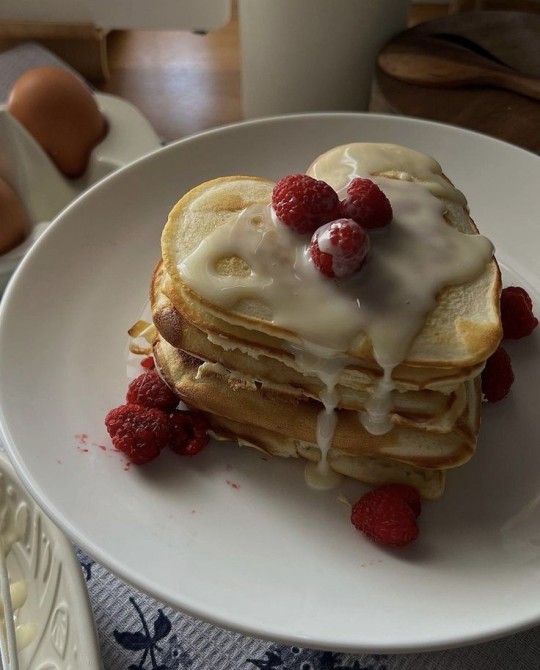
❥﹒♡﹒☕﹒ 𝘁𝗵𝗲 𝗽𝗲𝗿𝗳𝗲𝗰𝘁 𝗺𝗼𝗿𝗻𝗶𝗻𝗴 𝗿𝗼𝘂𝘁𝗶𝗻𝗲: easy tips to form healthy habits ( based on this alessya farrugia video )
lately i've been having trouble being productive and finding a healthy balance between study, passions, exercise and free time. i've been searching for a long time online for advices and ideas that could help me find my serenity, and my searches led me to this. i hope you appreciate it.
pro tip do not try to improve everything all at once, you're gonna fail. just try to incorporate something small in your routine to start forming healthy habits. it might take months, but one year from now it will all be worthy.
𝟭. don't hit snooze ( ⏰ )
the "snooze" button is definitely my worst enemy, i simply don't want to get up and start a new day that will be tiring and hard, but when i realized the reasons why putting off the alarm is so harmful for me i seriously started to stop doing it. you will actually wake up even more tired and sleep-deprived after the second or third alarm goes off, since falling back to sleep after having already woken up causes your brain to begin a new "sleep cycle" that takes 75 minutes to complete, abruptly interrupting these cycles brings unpleasant side effects such as tiredness, irritability and headaches.
bonus start waking up at the same time every day, this will not only help consolidate your routine but is scientifically proven that it significantly reduces levels of anxiety and depression.
𝟮. don't check your phone (📱)
i've always spent at least an hour scrolling through social media right after waking up every day, and it doesn't take a genius to figure out that it's not exactly the healthiest thing in the world. do not go on your phone for at least 30min/1h after waking up. i know it seems hard ( i have a severe phone addiction so i understand ) but i guarantee you that your days will be so much more stress free and productive. why? going on your phone as soon as you wake up gives you an instant hit of dopamine ( for more info, check this post ) that is gonna literally ruin your day, because your brain is gonna pretend more and more dopamine for the rest of the day in order to function properly.
𝟯. have a glass of water ( 🫗 )
you didn't drink for 8 hours or more so it's time to rehydrate your body. i hate drinking water as soon as i wake up so you can try adding some lemon juice to give it more taste, you can also try some herbal tea if it's winter and you don't feel like drinking cold water first thing in the morning, but avoid caffeine ( and theine ) for at least one hour after waking up. exactly like the hit of dopamine that your phone gives you, caffeine and similar stimulants will have the same effect on your body.
𝟰. have a cold shower ( 🚿 )
ok, i'm not one of those gurus who tells you to get up at 5 in the morning, take an ice bath and run 12 km before 7am, but switching to cold water for the last two minutes of your morning shower will have some benefits invaluable for you and your body. first of all it helps to wake you up, because it stimulates the nerve endings and makes the brain more active, it also helps to tone the skin and make the hair shinier. it's a difficult thing, but doing something like this in the morning will help your brain cope better with the workload during the day. it also reduces stress and anxiety, since the cold can activate the production of endorphins ( known as "happy hormones" ).
𝟱. physical and mental care ( 💕 )
take five or ten minutes to just look after yourself, do skincare - it doesn't have to be a deep session, just a little moisturizer and lip balm -, meditate, journal, cut out a few minutes from your morning routine where you leave out for a while all the negative thoughts, stress and anxiety, your body is your temple and you must treat it with reverence, your mind is your home, your safe place, and deserves your attention.
𝟲. get direct sunlight ( ☀️ )
apply some sunscreen and go get some sunlight, the benefits are so many that i couldn't list them all: i quote, production of vitamin D ( very important especially if you are a woman ), improved mood and, in general, physical and mental health, sleep regulation, improved skin. i know it's not always possible, especially in winter when there is very little sun, but for example if you have the chance to walk to school or work on a beautiful sunny spring day, take it!
𝟳. make the bed ( 🛏️ )
why should i make my bed if i'm going to have to sleep in it in the evening anyway? well, this is the mistake that i very often make and i admit that i am guilty of it. however, not making the bed is exactly the reason that pushes me to go back there immediately and sleep again. making your bed in the morning as an act of discipline will not only improve your self-esteem and make you less want to go back to sleep, but it will make your room seem cleaner and generally improve your environment, making you feel more productive and satisfied. completing that little task in the morning, even if it's small and simple, will give you motivation and will push you through the day.
𝟴. high-proteine breakfast ( 🥞 )
make sure you eat a balanced, protein-rich breakfast that will keep you feeling full until your next meal. it is useless to limit calories especially in the morning when we need an extra boost, this will only make us feel more tired and irritable and will significantly decrease our productivity.
#academia#college#education#note taking#school#student#study aesthetic#study blog#study inspiration#study motivation#academic validation#chaotic academia#light academia#dark academia#university student#uni life#university life#university#morning routine#morning routine tips#self improvement#self care#self love#skincare
108 notes
·
View notes
Text
Medicinal Remedies
Medicinal Remedies-- This is a LONG one!
NOTE: This article is about 20 of my favorite medicinal healing herbs to grow in most garden areas and types of soil. There are 100’s more, though, that I just couldn’t include because of space. Enjoy this rundown of 20 of my favorites.

1) Calendula:
Calendula is one of my top five favorite herbs of all time. It's sunny yellow or orange face can't help but make me smile. In summer time, it grows like crazy, just about anywhere, and like other flowers, the bees love it.
Calendula has some super skin healing and strengthening properties, and I always have some infusing in olive oil in a sunny window for use in salves, soaps, and other body products.
Calendula is also edible, and it's so fun to toss some blooms in your salad! It really brightens things up and adds excellent color. I love Calendula.
Calendula just makes you smile.
2) Cayenne:
Here is another herb I think should be in every garden. Cayenne is a very hot and pretty red pepper with some excellent culinary uses for adding spice to foods.
It's also great for helping with circulatory problems, can be used to help stop bleeding since it's a hemostatic herb, and has been shown to be useful in helping slow or even stop a heart attack until help can arrive.
It's also a very attractive plant, and the bright red of the pepper is just gorgeous mixed Into the dark green of the plant's leaves. This is one herb you should definitely grow if you can, and have handy in your herbal medicine chest.
Cayenne grows like crazy, especially in warmer climates. They dry well, too.
3) Chamomile:
Like Lavender, what would an herbal garden be without sweet Chamomile? It's honey scent and sweet taste are an absolute pleasure. Besides that....Chamomile is a popular relaxant and mild sedative herb.
Need to de-stress? Drink a bit of Chamomile tea!
Chamomile is also useful as an anti-inflammatory, as it contains high levels of azulene. It helps with pain relief, including for arthritis. If you are heading to bed and are bothered by mild pain, try drinking some chamomile tea! In one clinical study, this helped 10 out of 12 people fall into a restful sleep. (Gladstar)
Growing Chamomile can be tricky in very hot climates. It likes full sun, but a cooler climate. Chamomile is also best grown in less maintained soil and doesn't need the rich fertilization other plants require.
4) Chickweed:
Chickweed is another one of those "weeds" that is completely misunderstood and has some excellent medicinal qualities.
It's Latin name, (stellaria) means "star," and that is because of its small, pretty starlike white flowers. It's easy to grow, and has many uses.
Chickweed supports liver and kidney health due to its high nutrition and diuretic properties. It's also wonderful in salves for healing skin issues, including rashes, eczema, and very dry skin.
Chickweed is a great diuretic and blood purifier.
5) Dandelion:
This prolific weed, as some people see when they notice Dandelion in their yard, is actually a powerfully helpful medicinal herb! Dandelion is terrific for your liver and kidney health, having diuretic properties.
It's also an edible plant! You can roast the roots and add it to teas and even your coffee for a delicious flavor that also packs a healthy punch. The leaves can be eaten in salads and other foods.
6) Feverfew:
Feverfew has lovely white flowers and at least where I live, is rather invasive. I don't mind, though, because it has a great number of medicinal benefits.
As its name connotes, feverfew is helpful with reducing fevers. Most recently, however, feverfew has become rather well-known for helping with migraines, both preventing and reducing the intensity and time.
One of my favorite teas to provide for people who suffer from migraines is: 1 part feverfew, 1 part spearmint, and 1 part lemon balm. This is a soothing, nervine combination, that along with the powers of feverfew, can be used as daily tonic.
Feverfew is also great for minor bug bites. Just apply the tincture topically. Since it has mild pain relieving properties, it will help with the discomfort too.
7) Garlic:
Garlic is one of the BEST all around medicinal herbs anyone can grow, in my opinion. It's useful for treating colds, flus, sore throats, and digestive issues. Garlic boosts the immune system by increasing and stimulating the production of white blood cells.
Garlic is antiseptic, anti-bacterial, and vermifuge (kills parasites). It is also useful as a blood purifier and helps promote healthy circulation. It may also help regulate blood sugar levels in those with type 2 diabetes.
Besides all these wonderful benefits, garlic is delicious! It's added to so many foods and dishes because of the flavor it imparts. Granted, using garlic medicinally is different than in culinary uses, but if you really want to "eat thy medicine," as Hippocrates famously stated, garlic is a great place to start.
8) Ginger:
Oh, what would the herb world be without Ginger? This sweet and spicy pungent herb is actually a rhizome, not a root, as many believe. The useful part grows under ground, so is often confused.
Ginger is stimulating and is a great additive for teas, tinctures, and fermented foods, as well as culinary uses. Ginger is anti-inflammatory, decongesting, and increases circulation, promoting warmth. Ginger is also excellent for flatulence and stomach issues, including nausea.
Ginger likes a tropical environment---hot and humid. Therefore, unless you live down South, Ginger would most likely need to be grown in a green house.
9) Lavender:
What would the herbal world be without lavender? It's good for SO many things. Lavender smells wonderful, the bees love it, it's great for medicinal uses, AND it's a gorgeous flower. Lavender is useful for air freshening and cleaning the air or freshening closed up places such as drawers. It's popular in sachets for this reason.
Lavender is actually relatively hardy, growing well in Zones 5 through 8. If you are in a colder zone, be sure to plant your lavender in an area where it will get plenty of sunshine and be as warm as possible. If your winters are rough, you'll need to provide your lavender with some type of protection, especially from harsh winds.
I had some planted in pots here in the mountains, and it did very well all summer long. Even through snows, it was fine. But we get wind speeds over 125 miles an hour at times, and lavender just didn't last through that. Not much will, I guess.
Lavender is useful for so many things---AND it smells incredible.
10) Lemon Balm:
Lemon Balm....I LOVE this species of mint. It smells lovely, the bees love it, and it grows well nearly everywhere. Lemon Balm has a pleasant lemony taste and is a great additive in herbal teas, both for the nutritive value as well as the soothing nature and relaxing effects it has on the body.
11) Marshmallow:
This probably isn't included in too many herbalist's garden lists, but I think Marshmallow is seriously necessary. It's a demulcent and soothing herb, and it complements "hotter" herbs very well. It also soothes inflammation in mucous membranes and is one of my favorite herbs to use for allergy blends or teas for any kind of inflammation in the body for this reason.
Marshmallow is an upright plant, similar to a very small hollyhock. In fact, if you can grow hollyhocks where you are---you can use it pretty much interchangeably with Marshmallow as their chemical constituents are very similar.
The flowers are light pink and very pretty, too. The entire plant is edible and useful for medicinal purposes. Go ahead and throw a few flowers into your salad for a beautiful and surprising presentation!
Marshmallow is a demulcent anti-inflammatory. Plus, it's pretty.
12) Mullein:
This is yet another plant many see as just a weed, but has some truly wonderful medicinal qualities. Mullein is a plant that grows from a rosette of fuzzy large leaves into a tall stalk (sometimes as high as 7 feet tall) and is covered with yellow flowers in mid-summer.
Mullein does best in full sun, with lots of water, in cooler areas. It grows really well in the creek beds up here in our mountains, but I've heard it is very common in almost all places. It's worth trying to cultivate, in my opinion, if you don't have it growing naturally in your area.
Mullein is one of the best herbs you can use to support and heal the respiratory system and illnesses that affect the lungs, sinuses, and breathing. It's useful as a tea, tincture, and the large leaves can be used in an emergency to cover a poultice.
In my opinion, Mullein is the premier herb for respiratory issues.
13) Oregano
Oregano seems to be the bane of many gardener's existence. They plant it, and it just goes crazy. I can't tell you how many neighbors, family members, and friends have given me Oregano from their yards over the years! And I'm glad to have it! The thing with Oregano is you have to know how to manage it.
Oregano is a fabulous culinary herb, and if you have ever had pizza or marinara sauce, then you've tasted this delicious Mediterranean herb. Oregano grows best in warm, dry climates, but I have found in my experience that it is quite hardy and can survive winter lows in the single digits (at least it does in my yard).
Oregano (also known as Mountain of Joy in Greek) has some excellent medicinal uses, including having anti-viral, anti-biotic, anti-fungal properties, as well as being very high in anti-oxidants. It's a great skin care herb and also a digestive aid.
Oregano can be used in many forms, too: As a tincture, an herbal infused oil, eaten in foods, and as an essential oil. These all have different strengths, potencies, and uses.
The tincture is an easy way to use the herb medicinally, along with making or using in an herbal tea.
14) Peppermint:
Super easy to grow just about anywhere, Peppermint is a spreading perennial that has the propensity to take over your garden if you allow it! It's spicy, pungent scent is well known to just about everyone, since it's a popular culinary additive in many foods and candies.
Medicinally, Peppermint is useful for aiding digestion and getting rid of flatulence (gas). It has mild anti-spasmodic properties, so if you are experiencing cramps, especially digestive types or menstrual cramps, it can be very helpful.
15) Plantain:
Here is another weed that many people find repugnant, but that is actually an incredibly useful medicinal herb!
According to Rosemary Gladstar, Plantain grows everywhere, and if you invite it in, it will definitely show up.
Plantain is great for liver health, detoxifying and cleansing the blood, and drawing out toxins. I like to infuse it in oil for use in healing salves.
Like Dandelion, this easy to find weed is edible and useful.
16) Rosemary:
Rosemary is a famous culinary herb, and is great for use on red meats and very pungent dishes. Besides this, rosemary has been proven to be helpful for the brain, especially memory functions.
It's high in anti-oxidants, and has mild analgesic (pain relief) properties. Rosemary is a stimulant herb, and is helpful with circulation and low blood pressure. People with high blood pressure need to exercise caution using rosemary medicinally.
Rosemary grows best in hot, dry climates and is native to the Southern European countries.
Besides being a pungent and delicious culinary herb, rosemary provides medicinal qualities and enhances memory.
17) St. John's Wort:
St. John's Wort is a misunderstood plant, in my opinion. It went through a popular phase a few years ago and was touted as being the new natural anti-depressant. St. John's Wort can absolutely help with feelings of mild depression, sadness, grief, and Seasonal Affective Disorder (SAD), but it's not a cure-all.
Important to know---St. John's Wort can interact with certain drugs, so be sure you discuss usage with your doctor (as you should with any of these herbs mentioned).
St. John's Wort is also great for neuralgia, and I personally use it as part of my back pain and sciatica regimen with excellent results. I also use it in a tincture form to lift my spirits if I'm feeling down.
Besides all the medicinal qualities of St. John's Wort, it's a really pretty plant. You won't be able to grow it in a super hot area, however, at least it's unlikely. I tried growing it in Las Vegas, and it was a total fail. However, it does well here in the mountains in full sun or partial shade and the cooler climate.
One of my favorite ways to prepare St. John's Wort is as an herbal infused oil. The medicinal species (H. perforatum) releases bright red juices into the oil, creating the most lovely infused oil.
Another safety note for the garden: St. John's Wort has been shown to have potential for phototoxicity, especially in grazing animals if they eat too much. Just be aware and watch what your pastured animals eat.
St. John's Wort is a wonderful healing herb that positively affects the emotions.
18) Thyme:
Thyme, in my opinion, is one of the best plants to use in your garden. It attracts bees, smells lovely, and is incredibly useful for medicinal purposes. It's a small, spreading herb (although some species will grow upright) that is fairly hardy, so if you have rough winters, it may do just fine---you'll be seeing it again in the Spring, with it's pretty scented purple flowers.
Many herbalists forget all about using thyme as a preventative medicinal herb or for helping heal quickly from colds and flus---but it has been shown to fight off colds.
It also has disinfectant properties, and can be used as an effective wash for skin infections or as great sore throat rinse. For medicinal purposes, Thymus vulgaris or Thymus citriodorus (Lemon Thyme) are the best to use.
19) Valerian:
This stately flowering plant can grow to about four feet tall and has lacy white flower clusters. Not only is it a lovely addition to your garden, but it is very useful. It's a strong but safe sedative and is very useful for helping with anxious feelings, sleep issues, and pain relief.
Contraindications: Valerian has the opposite effect on some people, so if you are using it for the first time, do so on a the eve of a day that won't affect you much. These folks are rare, but there are definitely some that don't tolerate it well.
One of nature's best gifts---Valerian is lovely and it is an excellent safe sedative.
20) Yarrow:
Yarrow has many tiny flowers that grow in bunches, and feathery grayish leaves. It's a very pretty plant for your garden. Besides, the parts that grow above ground (leaves, stems, flowers) have medicinal purposes and have been used for thousands of years.
Yarrow is a vulnerary, hemostatic herb. Besides helping with healing and clotting of wounds, yarrow is good for helping reduce fevers, hay fever, and fighting colds. As a fever reducer, it is important to note that yarrow induces sweating, so if the person already has a hot fever, yarrow is probably not the best choice to use.
Article: healing harvest homestead
Picture: Nikolaydonetsk – photodune . net
#witch#hearth witch#herbal magick#kitchen witch#witch blog#small business#pagan#herbs#kitchen witchery#etsy shop#witchy#witchcraft#witchyvibes#green witch#witch community#witchblr#pagan witch#witch aesthetic#witchcore#witchlife#witches#hellenic pagan#pagan community#paganism#paganblr#wicca#pagan altar
302 notes
·
View notes
Text
as the school year begins here's a couple of magical tips:
drink celestial water (promotes creativity, focus, energy, confidence)
carry amethyst, tigers eye, & carnelian with you
write sigils in your notebooks to promote clarity, success, & focus
take healthy snacks (like sunflower seeds, pistachios, fruits & veggies! these are healthy for you and promote positive benefits spiritually)
put lemon or strawberry in your water
enchant your pens/pencils!
wear essential oils (lava rock beads or other means of carrying such as balms) to promote focus and calmness
make good luck charms (can be bracelets, rings, a keychain, etc)
have a good school year :]
#magic :: 🔮#witchcraft#witchy#witches#witches of tumblr#witchblr#witchcore#school#back to school#celestial water#crystals#sigils#enchanting#magic#school magic#spirituality#spiritual
159 notes
·
View notes
Text
Benefits of herbal teas
Herbal teas offer a range of benefits depending on the specific herbs used.
Here are some common benefits associated with herbal teas:
Hydration: Herbal teas, like any other type of tea, provide hydration to the body. Staying properly hydrated is essential for overall health and well-being.
Antioxidant properties: Many herbal teas contain antioxidants that help protect the body against free radicals, which can contribute to aging and various diseases. Antioxidants support cellular health and strengthen the immune system.
Digestive support: Certain herbal teas, such as peppermint, ginger, and fennel, can aid digestion, relieve bloating, and soothe an upset stomach. They may help alleviate symptoms of indigestion and promote a healthy digestive system.
Calming and stress relief: Several herbal teas, including chamomile, lavender, and lemon balm, have calming properties that can help reduce stress, anxiety, and promote relaxation. They can be a soothing beverage to enjoy before bed or during stressful moments.
Sleep aid: Some herbal teas, like chamomile and valerian root, are known for their sleep-enhancing properties. They can help relax the body and mind, making it easier to fall asleep and improve sleep quality.
Immune support: Certain herbs, such as echinacea, elderberry, and rosehip, found in herbal teas, can support the immune system and help prevent or alleviate symptoms of the common cold or flu.
Herbal remedies: Traditional herbal teas have been used for centuries as natural remedies for various ailments. For example, ginger tea is known for its anti-inflammatory properties and may help alleviate nausea and menstrual cramps.
It's important to note that while herbal teas can provide benefits, they should not replace medical advice or treatment.
If you have specific health concerns, it's best to consult with a healthcare professional for personalized guidance.
#benefits of herbal tea#herbal tea#witchblr#witchcore#witchcraft#witchlife#white witch#beginner witch#witch tips#grimoire#green witch#herb magick#spirituality#book of shadows#kitchen witchcraft
209 notes
·
View notes
Text
What are Infused Oils?
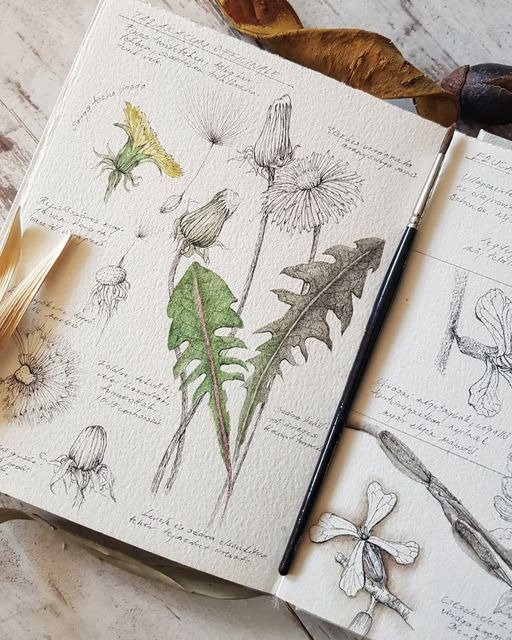
What are they?
Infused oils are herbal components or spices placed in a jar of carrier oil like Olive Oil, Grapeseed Oil, Avacado Oil, Jojoba Oil, Coconut Oil, etc. Can be used in cooking, herbal ailments and skincare.
Are they essential oils?
No. Short answer, no. Long answer? I'll give you an explanation. Essential oils are distilled using Steam Distillation, Solvent Extraction, CO2 Extraction, Maceration, Enfleurage, Cold Press Extraction, and or Water Distillation. Lotta words huh? It takes a lot of work to make essential oils. Unfortunately, it also takes quite a bit of that plant to make even those tiny 10ml bottles you purchase. Of course, each plant varies. However, it still can lead to a larger environmental impact.
For instance, one pound of essential oil can be extracted from approximately 250 pounds of rosemary leaves, or from 150 pounds of lavender buds, or say 50 pounds of eucalyptus leaves. This is why you see some as more expensive than others. Unfortunately, you can see where the problem lies in plants that are more threatened or endangered. If you must use essential oils, source responsibly (and not from a Pyramid scheme but I'm not opening that can of worms)
Can I use infused oils in my practice?
Yes! Absolutely! All these oil recipes you see for spell oils are exactly that. You can even use the elemental correspondences of the carrier oils you use for spell oils. As an example Olive Oil is traditionally known for the fire element and Coconut Oil is water. The possibilities for your personal correspondence are endless!
Now I'll stop rambling. Here are a few methods I learned to infuse oils in my courses and through self-herbalist study.
Method One:
The Folk Method - The most common
Directions
Place DRIED herbs in a clean, dry jar. Leave at least 1 to 3 inches of open space above your herbs to cover with oil.
Fill the remaining space in the jar with the oil of your choice, making sure to cover herbs by at least 1 inch or more. If the herbs emerge above the surface of the oil at any point while infusing, pour more oil on top to ensure the herbs remain covered.
Cap the jar tightly and shake well.
Place the jar in a sunny, warm windowsill and shake once or more per day.
After 2 to 3 weeks, strain the herbs out of the oil using cheesecloth or a mesh strainer. Or you can leave it in but straining is recommended if you are using dropper bottles as it clogs the caps.
Pour into clean glass bottles.
Remember to label your jars with the date, type of oil, and herbs used! You WILL forget! Trust me.
Store in a cool, dark place. The oil may keep for up to a year.
Method Two:
The Heat Infused Method - Quick Infusion
Directions
Place herbs in the crock pot or double boiler. Cover with extra virgin olive oil (or other carrier oil of choice), leaving at least an inch or two of oil above the herbs.
Gently heat the herbs over very low heat (preferably between 100° and 140° F for 1 to 5 hours, until the oil takes on the colour and scent of the herb. Some recommend heating the oil for 48 to 72 hours at a controlled temperature of 100° F. Turn off the heat and allow it to cool. I personally prefer letting it sit in a crock pot for 72 hours as I feel like I get all of the benefits out of the herb.
Once oil is cooled, strain using cheesecloth.
Bottle in dry, sterilized glass bottles. LABEL your bottles with the date and contents before storing them.
Store in a cool, dark, dry place for up to six months.
Best herbs to infuse in oil
There are a countless number of herbs, spices and resins that can be infused into the oil. Please make sure these herbs are free from pesticides and chemicals (not found on the roadside). Dried herbs work best as you don't want your mixture spoiling sooner. Here are some great examples of herbs to use.
Pine needles
Calendula flowers
Chamomile flowers
Lavender
Lemon balm
Peppermint leaf
Rosemary leaf
Thyme leaf
There you have it! Now have fun and source responsibility.
Happy witching!
Want to read more?
On sustainability and impact:
Links:
Dangers of essential oils and pets:
Link:
Want to check out my other post? Look at my Masterpost
#witchcraft#witch#infused oils#spell oils#essential oils#aromatherapy#kitchen witchcraft#herbal magic#herbalism#herbalist#herbal medicine#witchblr
23 notes
·
View notes
Text


HALLOWEEN FLASHBACK
Sonia Kashuk Radiant Tinted Moisturizer in Fair
Benefit Boi-ing Industrial-Strength Concealer in 01
Nyx Stay Matte But Not Flat Powder Foundation in 04 Creamy Natural
CoverGirl Clean Pressed Powder in 150 Creamy Beige
Urban Decay Naked Basics Palette (W.O.S. + Naked 2)
Revlon ColorStay Liquid Liner in Blackest Black
Nyx Doll Eye Long Lash Mascara
Wet N Wild Fantasy Makers Bewitching Eyes Eyelashes in Hypnotize
Ardell DUO Clear Eyelash Adhesive
eos Lemon Drop Lip Balm
Metallic Teal Gel Liner
Costume from Spirit Halloween
GETTING READY BLOG POST
HALLOWEEN 2013 OOTD BLOG POST
Getting Ready Halloween 2013 (Fortune Teller)
Halloween OOTD: Fortune Teller Costume
hazeltail on youtube / hazeltailofficial on tiktok / hazeltailofficial on ig / @hazeltailofficial / @hazeltail
#halloween#halloween makeup#halloween costumes#halloween 2013#blue makeup#blue lipstick#fake lashes#false lashes#fake eyelashes#false eyelashes#alt makeup#alternative makeup#colorful makeup#makeup of tumblr#makeup tumblr#beauty community#beauty youtuber#makeup#beauty#fashion#fashion youtuber#makeup blogger#beauty blog#beauty blogger#fashion blog#fashion blogger#style blogger#style blog post#hazeltail#hazeltail official
9 notes
·
View notes
Text
#drinks#easyrecipes#GAMEDAY#gingers#healthylifestyle#HealthyLiving#herbtea#homegrown#icedtea#LEMONADE#mint#organic#recipeblog#refreshing#summer#tea#tee#vegan#benefits of lemon balm#fresh lemon balm tea recipe#health benefits of lemon balm#health benefits of lemon balm tea#herb tea recipe#herbal tea recipe#lemon#lemon balm#lemon balm benefits#lemon balm health benefits#lemon balm herb#lemon balm plant
0 notes
Text
A Brighter Complexion and a Bubbly Tummy: My Neotonics Journey
For years, I'd faithfully followed a skincare regime, but recently, it felt like my efforts were in vain. My complexion appeared dull and uneven, and let's not even mention the occasional digestive troubles that put a damper on my days. Seeking a more holistic approach to well-being, I discovered Neotonics Skin & Gut supplements.
Nature's Bounty in a Gummy
One of the main reasons Neotonics piqued my interest was their dedication to natural ingredients. Having had less-than-pleasant experiences with harsh chemicals in the past, I craved something gentle yet effective. Neotonics delivers with a blend of botanical extracts like lemon balm, babchi, and dandelion, alongside prebiotics like inulin to keep your gut happy. The absence of stimulants, GMOs, and gluten was another big selling point.
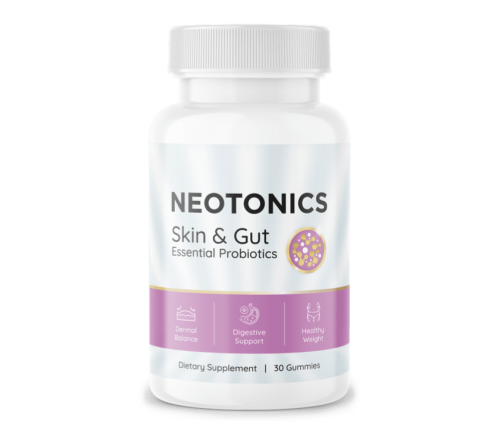
Deliciously Easy to Take
Convenience is king, and Neotonics aces this category. Forget wrestling with capsules – these come in delightful gummy form! The flavour is pleasant and not overly sweet, making them a treat to take each morning. They've seamlessly integrated into my routine, serving as a gentle reminder to prioritise my well-being.
From Dull to Dewy: A Visible Transformation
While the results weren't instantaneous, after a few consistent weeks with Neotonics, a real difference emerged. My skin felt smoother and boasted a healthy glow I hadn't seen in ages. Those pesky blemishes that used to be unwelcome guests became a distant memory. But the benefits weren't just skin-deep. My gut health improved significantly, with no more bloating or discomfort – just a happy tummy!
A Wise Investment in Overall Wellbeing
Neotonics might seem pricier than some high-street supplements, but I firmly believe they're a fantastic investment in your overall health. Natural ingredients, the ease of the gummies, and the noticeable improvement in my skin and gut make them well worth the cost. Plus, Neotonics offers a money-back guarantee, so you can try them risk-free.
A Wholehearted Recommendation
If you're seeking a natural approach to improve your skin health, gut function, and overall well-being, then I wholeheartedly recommend giving Neotonics a go. They've become a cornerstone of my wellness routine, and I can't imagine going back. Just remember, consistency is key with most supplements. Give Neotonics a few weeks to work their magic, and you might be surprised at the radiant results – both inside and out!
#wholeheartedsuggestions#recommandation#steddie fanart#natural body#approach#self improvement#home improvement#art improvement#most muscular#fluff#masterlist#the noble and most ancient house of black#fall out boy
2 notes
·
View notes
Text
Herbs
These are the herbs that I see most commonly discussed/put into spellwork and their metaphysical/magickal properties/what you can do with them.
Rosemary - protection, cleansing, faithfulness, memory, and as a substitute for other herbs
Lavender - purification, and happiness
Bay Leaves - healing, protection, psychic enhancement, success, wishes
Mint - protection, and love attraction
Thyme - courage, healing, health, psychic abilities,
Basil - Astral Projection/travel, wealth, protection, love
Lemon Balm - Health and healing (both physical and mental)
Clover - protection, love, money, success
Mugwort - astral projection/travel, dream work, psychic abilities
ATTENTION! Please do not ingest any herb without first consulting with someone who knows their stuff to make sure that it is safe for you to ingest!
Sources: https://www.groveandgrotto.com/blogs/articles/magickal-properties-of-rosemary
https://spiritualkindling.com/benefits
https://moodymoons.com/2016/01/07/10-magical-uses-for-rosemary/
https://plentifulearth.com/magical-properties-of-rosemary-rosemary-materia-magicka/
https://plentifulearth.com/magical-properties-of-lavender-lavender-materia-magicka/
https://plentifulearth.com/magickal-correspondences-of-bay-leaves-bay-laurel-materia-magicka/
https://magickalspot.com/mint-magical-properties/
https://plentifulearth.com/magical-properties-of-thyme-thyme-materia-magicka/
https://www.flyingthehedge.com/2014/09/herbarium-thyme.html
https://plentifulearth.com/magical-properties-of-sweet-basil-basil-materia-magicka/
https://www.flyingthehedge.com/2020/01/magical-uses-of-basil.html
https://www.moonmaidbotanicals.com/lemon-balm-uses.html
https://www.thepracticalherbalist.com/advanced-herbalism/lemon-balm-myth-and-magic/
https://www.flyingthehedge.com/2019/06/herbarium-clover.html
https://tesswhitehurst.com/the-magical-properties-of-clover/
https://www.groveandgrotto.com/blogs/articles/magickal-properties-of-mugwort
https://gardenculturemagazine.com/mugwort-a-magical-and-medicinal-weed/
https://www.spiritualmagickal.com/mugwort-herb-organic.htm
33 notes
·
View notes
Text
What to Drink after Abortion for Fast Recovery
Undergoing an abortion can be a physically and emotionally challenging experience for women. After the procedure, it is crucial to prioritize your well-being and recovery. Proper nutrition and hydration are vital in promoting healing and restoring energy levels. In this article, we will explore What to Drink after Abortion that can aid in your fast recovery, providing the necessary nutrients and…

View On WordPress
#Benefits of Drinking Water#Chamomile Tea#Drink#Drink after Abortion#Drinking Water#Drinking Water after Abortion for Fast Recovery#Ginger Tea#Hibiscus Tea#How to use water after abortion for fast recovery#Is Herbal Tea good for you?#Is milk good for you?#Lemon Balm Tea#Nettle Tea#Peppermint Tea#Red Raspberry Leaf Tea#What to Drink after Abortion#What to Drink after Abortion for Fast Recovery
0 notes
Text
Does Neotonics Really Work? Neotonics Review - Neotonics Supplement
If you came to this article it is because you want to know more information about Neotonics.
You want to know if Neotonics really works, what the ingredients are, how to use Neotonics and also where to buy it safely!
Therefore, I decided to write this review to tell you everything about Neotonics.

✔ What is Neotonics?
Neotonics is a specialized formula developed to address the connection between gut health and aging skin. It contains a unique blend that promotes a healthy gut microbiome, improving skin cell turnover and providing essential nutrients for healthy skin.
✔ Does Neotonics Work?
Yes, Neotonics works.
Neotonics is formulated with important ingredients to keep skin youthful and radiant.
It contains a unique blend of 500 million units of extra-strength bacteria and 9 potent natural ingredients that work together to promote a healthy gut microbiome.
This composition makes our skin appear brighter and firmer, and eliminates fine lines and wrinkles more quickly.
✔ Neotonics Ingredients
Neotonics is made up of 100% natural and unique ingredients that are clinically proven to
support healthy, glowing skin and mechanical digestion.
Inside each "Neotonics" gummy you will find:
- Babchi
- Inulin & Dandelion
- Bacillus Coagulans
- Fenugreek
- Lemon Balm
- Organic Ceylon Ginger
- Slippery Elm Bark
- Organic Lion’s Mane
- Fennel
✔ How To Take Neotonics?
The suggested starting dose of Neotonics is one capsule per day. To obtain the full benefits, it is advisable to use Neotonics continuously for at least 3 months.
✔ Is Neotonics certified by the FDA?
Neotonics is produced in facilities in the United States that are registered and follow Good Manufacturing Practices (GMP) guidelines.
✔ Neotonics is Safe?
Yes, Neotonics has no side effects, it was made with natural, GMO-free ingredients. Additionally, it is manufactured in an FDA-registered facility and adheres to Good Manufacturing Practices (GMP) in the United States.
✔ Does Neotonics offer a guarantee?
Yes, Neotonics has a guarantee valid for 60 days.
✔ Where To Buy Neotonics?
Neotonics is solely sold on its official website. Purchasing directly from the maker guarantees you receive a genuine product, high quality, and the opportunity to benefit from special deals and discounts.
✔ Neotonics Review
In the video I explained everything about this wonderful skin supplement and that Neotonics really works. Now that you know that Neotonics is worth it, how to use it and where to buy it, I hope you enjoyed Neotonics Reviews!
Still have questions? Watch this video:
youtube
So that's it, I hope you enjoyed this review.
I tried to bring the main information about Neotonics. Don't forget that Neotonics can only be sold through the manufacturer's official website.
Access below and guarantee your pots of Neotonics:
>>> Official Website Neotonics
The post Neotonics Review was first published on Canal Flamengo Online
2 notes
·
View notes